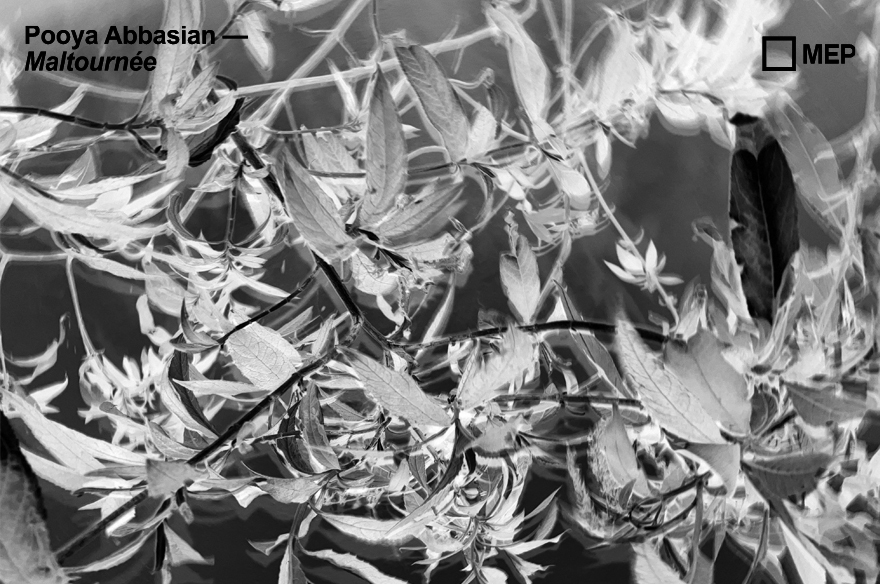
Fragments of a suburban memory
Photography (whether we think of it as analogue or digital) is both everywhere and nowhere in Pooya Abbasian’s work. It seems to appear as much as it disappears, to show (itself) as much as it hides (itself), to evaporate or liquefy when we think we have grasped it. Recent experiences such as the installation Lumen (screenshots of documentary images printed on large Perspex panels) demonstrate Abbasian’s perpetual oscillation between still and moving images. They overlap or capture each other, although his use of film as a cinematic object is even more recent – and therefore experimental.
Far from taking a purist approach to the medium, the photographic/filmic image in his work is elusive, ambiguous, even treacherous. Far from acting as a guarantor of the reality that it would authenticate, it catalyses the underside of reality, even its aftermath, rather than its shadow. It is less concerned with the tangible evidence of reality itself than with the traces that are rendered sub-real; or with the signs and fragments of lives that are unauthorised, unaccounted for and undigested by our “reality”. This is not to say, however, that his approach to the image is entirely devoid of a documentary dimension, far from it. In fact, Pooya Abbasian’s images seem to navigate a delicate balance between non-objectivity and speculative realism, cinéma vérité and collective cinema – all the while rejecting the common notion of “reality”, which he tends to deconstruct through caesuras, shifts in time and audiovisual collages.
Take, for example, his fragments of ceramic impressions, which depict suburban anti-landscapes and weeds in an almost magical way, via photographic emulsion, like rayographs that could have been formed over thousands of years by the reflection of sunlight on pieces of archaeological stone. Originary images, Abbasian’s printed ceramics are distant reminders – through botanical kinship – of William Henry Fox Talbot’s images in The Pencil of Nature (1884). Considered the first published book illustrated with photographs, it symbolises a euphoric visual modernity in which mechanical images take on magical powers and feed endless urban reveries. Visionary images, they also resemble digital fossils destined for the archaeologists of the next century, whose task it will be to study today’s society in all its recesses, fringes and most melancholy margins. Would they be able to see to what extent Talbot’s reveries and Baudelaire’s flâneries gave way to a social and ecological no-man’s-land on the verge of collapse? The result is fragments of landscapes and faces whose time and origin we can no longer identify; they confuse our steps as we walk down the corridors of the past/present/future, inviting us to drift through the nonplaces of memory.
In the MEP Studio, Pooya Abbasian has created an exhibition in which the ceramic prints interact with the space, showing and hiding themselves, elevated to the status of the images on display and at the same time returning to dust beneath our feet. They also serve as psychic clues (or fragments of film fallen off the editing table and become petrified in contact with the radioactivity in nature), interacting with the videos exhibited by Abbasian, specifically Maltournée. It’s as if the ceramic impressions had been found in the hirsute wastelands and beneath the shadowy bridges of Seine-Saint- Denis, a territory well-known to the artist, who has been working there for a long time, forging connections not only with passers-by but also with vagrants and the community at large.
The film Maltournée can be seen as a post-modern journey to the end of the night, echoing the song written by the Swiss guard Thomas Legler in 1793: “Our life is a journey/ through winter and night/ We look for our way/ in a sky without light.” Included as an exergue to Louis-Ferdinand Céline’s famous novel, this brief poem has a particular resonance with the overlooked lives of displaced people and those in exile, who have no right to a name or a face; and with Abbasian’s equally occult images in Maltournée, which seek neither to follow nor to identify these people, but rather to document their “absence” – understood here as a particular mode of presence. In Persian, for example, the most common expression for missing someone is “Your place is empty” (Jât khâli-e), which implies a presence and a materialisation of emptiness or absence. In this instance, the mainstream media are there to disseminate images of the (often violent) evacuation of “migrant” encampments (a word that should be banished out of sheer resistance to a certain populist and racist Newspeak) by the public authorities, with a view to the definitive expulsion of these people over the longer term. To demonstrate that the State has total control over its territory and its population, it must do everything in its power to repel all foreign bodies, to the point of eradicating them from public space. Demonstrations of force or the use of “legitimate violence” are also reflected in a more general policy of refusing to accept foreigners, despite the fact that we know that they are fleeing war, drought and various other crises that await us in the near future; as “Westerners”, we are in fact not immune to any of these crises, but prefer to turn a blind eye to them.
Maltournée’s approach to conveying this physical, psychological and political violence is to let the places speak for themselves rather than attempting to speak for the displaced. Abbasian sensitively avoids any form of sensationalism or journalistic sentimentality, instead creating a fragmented narrative based on serendipity: A piece of paper lost in the brambles, blown by the wind, leads to an encounter with a local resident, who in turn leads us to an all-night vigil where a few people are still wandering around; all the while questioning the conditions of the eviction and its treatment by the media, but with as little direction as possible. The man with the camera hardly asks any questions; instead, he listens to murmurs and shivers, letting the roles change regularly as the encounters evolve (who is speaking? who is deciding which way to go? what should we look at?…).
Abbasian’s long, meditative and analytical shots through these wastelands and anonymous spaces represent the reverse angle of the state of emergency that governs us. The State believes that the Convention on Human Rights does not apply to its empty lots and dead zones where asylum seekers take refuge. It creates lawless zones on its own soil, risking apartheid, detention camps and humanity’s worst nightmares.
As Pooya Abbasian’s other video, Aubervilliers, shows, the abandoned lots and nonplaces of Seine-Saint-Denis, haunted by this awareness of the worst, merge with the construction site of the Greater Paris project. The montage (which is also formed for the viewer between the images of Maltournée and Aubervilliers) creates a clash between legal and humanitarian no-man’s-lands and new urban utopias. By calling into question both the structures and the ruins of these new utopian spaces, Abbasian brings us to ask ourselves: is it about pushing back or reproducing, underlining or erasing the border – both real and imaginary – between the centre and the periphery, or between the city and the “banlieue” (which have become synonymous with social relegation). This term, which should be placed in quotation marks and reflects so many of the illusions and failures in the social and urban policies of recent decades, now seems to have been buried by a new “suburban” awareness of the humanitarian and ecological challenges facing a generation of artists of which Pooya Abbasian is a worthy member.
Morad Montazami
Director of Zamân Books & Curating
April 2024
Translated by Laurie Hurwitz
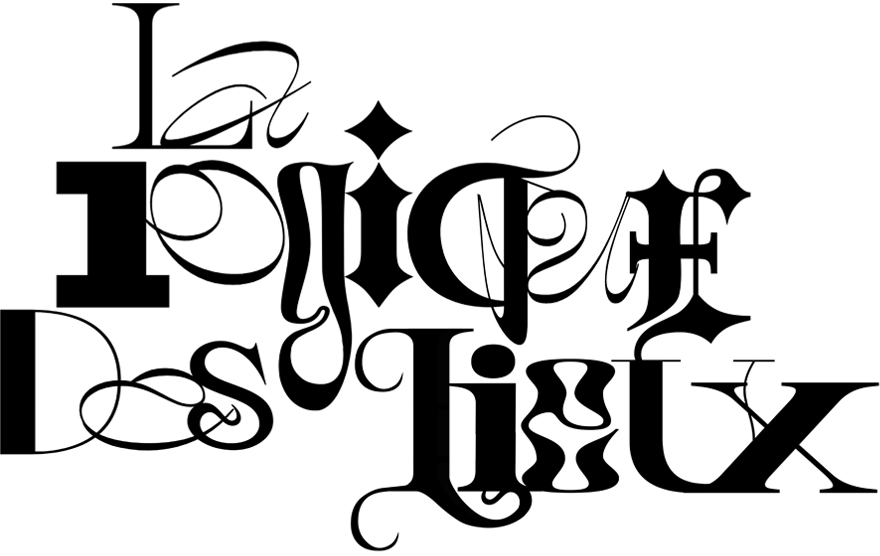
The Logic of Places
Influenced by cinema, Pooya Abbasian interrogates in his practice the modes of construction, dissemination, and reception of the image. Through photography, film, or installation, he aims to make these processes visible to better witness the manipulations wrought by the circulation of images, thus giving them a moment of scrutiny and ambiguity. Continuing a series of films exploring various peripheral territories, the works presented here grapple, through different mediums, with the processes of cultural appropriation and gentrification in Seine-Saint-Denis. With Romainville as the backdrop, his new film is a mise en abyme of an artists’ residence as well as the buried history of this territory and its flows, oscillating between a documentary and speculative approach.
Élodie Royer

Slave to Trends
Slave to Trends is a project that explores the complex dynamics of cultural appropriation and gentrification in the 9-3 (Seine-Saint-Denis). Building on reflections initiated with Les Bas Pays, this project highlights how a territory’s identity can be transformed into ephemeral fashion, influenced by contemporary artistic trends.
The exhibition begins with an interactive experience where visitors are invited to get temporary tattoos of the 9-3 logo in pink. This simple act of marking one’s skin with the suburb’s identity becomes a symbolic gesture of appropriation, emphasizing the paradox between the deep identity of the 9-3 and its exploitation for aesthetic or commercial purposes. Although temporary, the tattoo serves as a reminder of how elements of suburban culture are often superficially adopted.
The project also features a series of screenprints on glass, where images from protests in Aubervilliers are printed on salvaged construction glass.
The exhibition culminates with a video installation featuring a song by the Black-Metal band Emperor. The song’s lyrics have been rewritten and reinterpreted to give voice to the gothic 9-3 logo, transformed into a character in its own right. This logo, once rejected and now trendy, speaks directly to the viewer, reflecting on its future: “I’m gonna be uncool and hateable again.”
Slave to Trends sheds light on the mechanisms by which underground aesthetics and local culture can be absorbed by mainstream currents, only to be discarded later. The project questions the durability of these trends and the real impact of such appropriations on the communities they draw from, leaving viewers confronted with an uncomfortable reality.
Text from the exhibition at Fondation Fiminco
Neighbourhood watch
Iranian-born, Paris-based artist Pooya Abbasian initially applied to POUSH with a portfolio on wild plants, but has since become attuned to banlieue sociopolitical geography. Translated as ‘suburbs’, banlieues are perhaps more akin to inner-city areas in UK cities, and suffer from similar deprivations; while cycling to his studio every day, Abbasian passed migrants, tents and police, and felt he had no choice but to integrate that reality into his work.
He began addressing head-on “ambiguous subjects such as cultural appropriation and gentrification”, the risks of expanding into the lower-income areas, a problem familiar to all large cities. Abbasian created a video of a logo featuring le 93 (the Seine-Saint-Denis postal code) in Gothic lettering, in a project called A Slave to Trends; he also ordered hoodies printed with 93 on the back. Abbasian questions the ethics of artists moving into the banlieue. “We are helping gentrification,” he points out.
“The prices get higher, then we have to move to the [next] suburb further away.” He notes that people talk about “good gentrification” – outsiders rendering humdrum locales more dynamic – but questions the benefits for existing locals. What are the codes of inhabiting a space unattractive to artists until space was explicitly built for them?These issues can, of course, also be laid at POUSH’s door but Fondation Fiminco, in the neighbouring suburb of Romainville – where Abbasian has another residency – makes for an interesting comparison. Fondation Fiminco hosts commercial galleries and is aiming to become a cultural quarter contained from the wider area; POUSH strives to be inclusive, running educational activities that welcome locals and school kids, and maintaining a dialogue with
a neighbourhood in which the big galleries and museums can feel remote (despite being a short metro ride away).
Abbasian does test prints in his studio at POUSH, and has recently been “painting with the light of the video projector” – printing long videos onto photo-sensitive paper, yielding abstract forms. “For many years, I was learning how to make a good photo,” he says. “I started to realise that I’m not satisfied with this ‘perfect composition’ anymore, so I decided to deconstruct everything I learned and make room for luck. That’s where the poetry starts to happen. I cannot control it, and I found that more interesting.” In 2024, his work was shown in the project space at the Maison Européenne de la Photographie.
At the time of our conversation, POUSH was at risk of losing its lease post-2024; the team is trying to cement the Aubervilliers space on a more permanent basis, but due to the uncertainty is also looking for other homes. “It is very stressful, for artists and administration alike,” says Kruger. Either way, POUSH will endure. Providing welcome support for artists, particularly those with less renown or more experimental practices, it is helping breathe life into Le Grand Paris.
Sarah Moroz
Published at British journal of photography
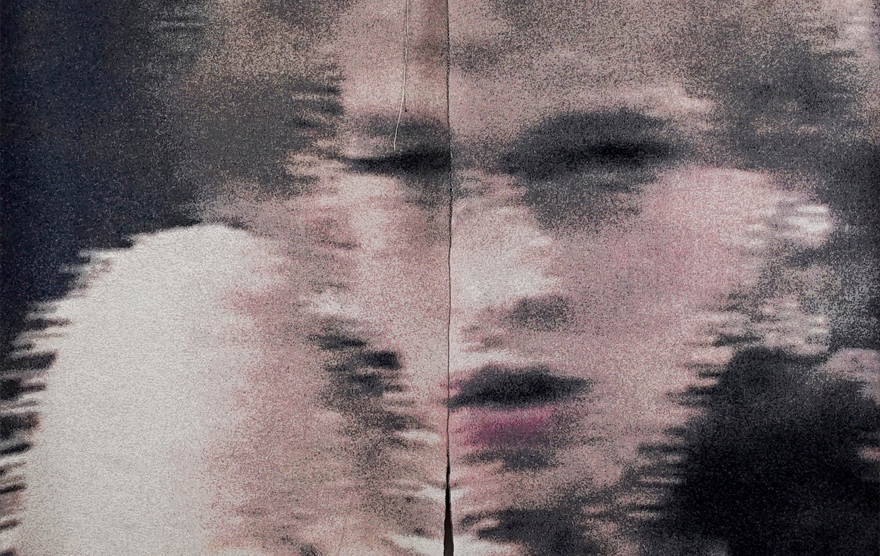
The Photographic Hybridizations of Pooya Abbasian in Search of Realities
Pooya Abbasian’s stand at the unRepresented 2024 salon made remarkable use of the Molière showcase space, thanks to the diversity of techniques and the plastic strength of the exhibited works. He continues this multi-artistic exploration at the Maison Européenne de la Photographie with Maltournée, which includes a video about a vanished refugee community and ceramic fragments from broken toilets or sinks, covered with photographic emulsions—images of the places where they were found.
Born in 1985, Pooya Abbasian is an Iranian artist who has lived in Paris since 2011. Two creators from his homeland, whom he worked with as an assistant, played a key role in his artistic development. He has collaborated several times with Iranian filmmaker Jafar Panahi, notably known for Taxi Tehran (2015). In 2022, Frac Île-de-France, Le Plateau dedicated a monograph to him: Œil pour Œil.
Abbasian has developed a singular artistic practice by hybridizing mediums from different eras. He has created cyanotype and lumen series, using a printing technique he invented with a digital projector. His aesthetic emphasizes ambiguities and transitional states of images. He describes his approach as a search for “poetic fractures born from the marriage of mediums, like black holes opening onto new horizons to explore.” His work is based on images collected from the internet, news sites, or his own photographic practice.
Regarding personal mythology, Abbasian acknowledges the influence of his Iranian childhood and migration to Europe but strives to avoid the pitfall of self-exoticism. However, he does not shy away from referencing major events in his home country in certain series. Putting a Satellite into Orbit is a large-format lumen print based on a screenshot of an online news photo. Rendered in negative, it recalls Iran’s failed satellite launch in 2019. Sanchi references an oil tanker collision that resulted in its sinking; the families of the deceased sailors later received anonymous messages denying their deaths. Abbasian describes being deeply unsettled by this ghostly situation.
These two series align with his broader approach, as expressed in the title Re-Transmission of a Memory. They feature abandoned places and plaster objects found on-site, both captured through a dual technical process involving photography and digital projection. The final images are displayed on fragile supports, such as transparent fabrics, reinforcing their transient nature.
Though complex in their creation, the resulting images appear humble and ephemeral, blending the material and immaterial. They play with blur, precariousness, and transparency, leaving room for the viewer’s interpretation. In his essay Fractionnement/effraction de l’image, critic Morad Montazami remarks:
“From the outset, these images captivate us with their spectral presence, hovering at the edge of visibility—an effect of their production process and genesis. They emerge from a video projection onto photosensitive paper, which is scanned before the image-trace evaporates, leaving behind an imprint-image that the artist finally fixes by printing onto plexiglass—the ultimate support.”
Human presence fluctuates in Abbasian’s work, particularly in the series Discreetly Living Behind Your Face, which depicts the backs of figures, often female models, viewed from behind or three-quarter angles with their napes exposed in a bun. These images create a tension between identity and an uncertain approach to the other, evoking impossible or deferred encounters. Their sensual fragility is further emphasized through the cyanotype technique, an ancient photographic process.
Another mode of presence appears in Abbasian’s plaster and ceramic fragments, onto which faces, often female, are projected. This is evident in the Lumen series and its display during Le Radeau des Cimes exhibition. These small-format portraits were juxtaposed with large-scale prints bordering on abstraction.
With remarkable sensitivity, Pooya Abbasian’s work questions the current conditions of image existence, whether archival, documentary, or artistic. By juxtaposing fragile remnants with spectral presences on the verge of invisibility, he develops a poetic language of traces, exploring the boundaries between memory and disappearance.
Christian Gattinoni
From the book « NOS PARIS CRITIQUES »
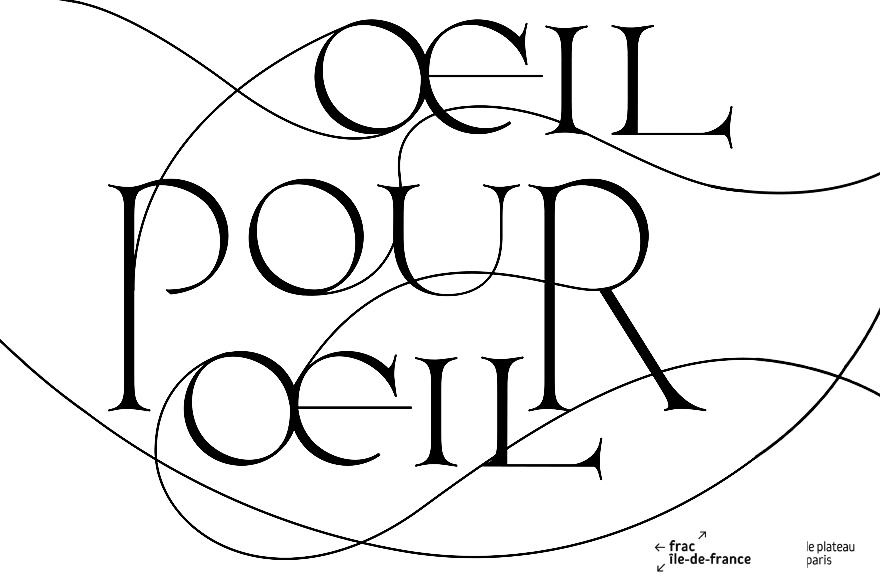
Œil pour œil
Pooya Abbasian’s installation offers a contemplative reflection on memory, media, and cultural perception. The work consists of a 10-hour video capturing the view from the window of his father’s shop in Tehran, juxtaposed with a carpet woven from images sourced from the Turkish encrypted channel Ciné5. These elements, seemingly disparate, converge to form a dialogue between personal history, the reconstruction of fragmented memories, and the persistent gaze of foreign audiences upon Iranian culture.
The carpet, a central feature of the installation, draws from a deeply evocative, though fragmented, memory Abbasian experienced during his adolescence in Tehran. In this memory—part real, part dreamed—Abbasian recalls his first encounter with alcohol, at a friend’s older brother’s home, a kitschy and disjointed space populated by older men. During the evening, a woman, later revealed to be a prostitute, left the house, prompting anger among the men who arrived later. Abbasian and his friend, retreated to another room to play video games. Upon waking in the early hours, Abbasian found himself following a light to a television screen, where encrypted images from Ciné5—barely discernible but recognisably erotic—flickered across the screen. In front of the TV, three men were silently watching, engaged in an act of masturbation that left a lasting imprint on Abbasian’s memory.
This hazy recollection forms the conceptual basis of the carpet. It is a piece that transcends its materiality, operating not only as a memory-object but also as a critical reflection on the exoticization of Iranian culture. By utilizing imagery from an encrypted Turkish channel—once an illicit source of erotic content in Abbasian’s youth—the carpet becomes a medium through which the artist interrogates the way Iranian art is often consumed by foreign audiences. The traditional associations of the carpet as a symbol of Iranian craftsmanship and cultural heritage are subverted, becoming instead a satirical object, designed to question the fetishization of ‘Eastern’ art. The carpet, thus, embodies the tension between personal memory, cultural identity, and the external gaze that seeks to reduce both to mere exoticism.
Excerpt from the text of the exhibition at FRAC Ile-de-France.
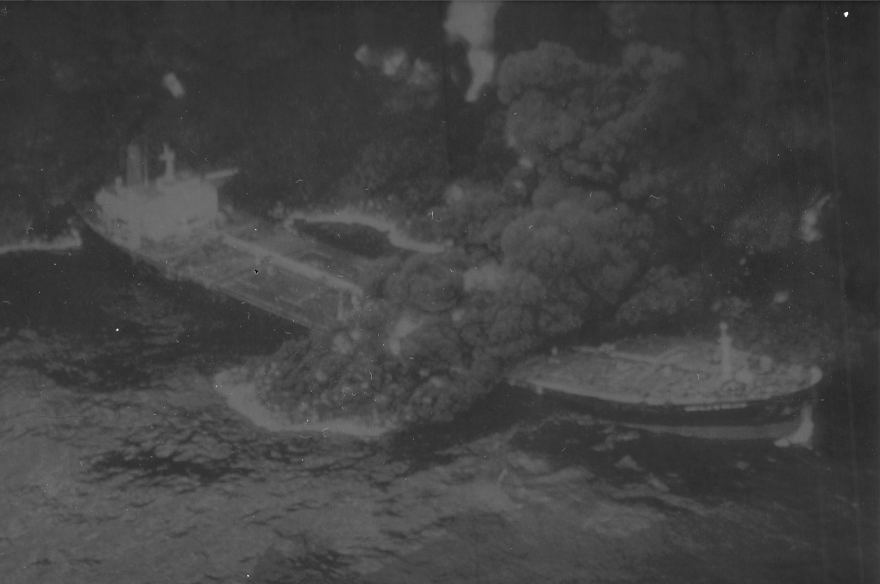
Fraction/break-in of the image
The Lumen series by Pooya Abbasian offers a particularly original visual experience and technique. It requires meticulous attention, perhaps a moment of visual pause. Immediately these images question us through their spectral presence, at the limit of the visible, as a consequence of their fabrication process, their genesis. They result in fact from a video projection made on photosensitive paper, itself scanned, before the evaporation of the image-trace left by the projection, in order to make an image-imprint of it, which the artist finally fixes by printing it on a plexiglass support – the final support being in turn conducive to a series of reflections, dissensions and visual dilations.
So from the power of the initial video projection, to the sensitivity of the paper that captures its trace, passing through the printing technique on plexiglass, each of these factors adds a potential track to capture the image and at the same time blurs our real possibilities of finding a path towards it. The image as point of origin or point of departure mutate to become a sort of moving sand or magnetic fields, whose fragile crystallization “exposed” here can take on a new value: that of an image that is both material and immaterial and which is nevertheless stated before us like a sculpture (not fixed to the wall) or a body in space, at the limit, totally decontextualized from the technical ecosystem that saw it born.
The latter can be linked as much to Man Ray’s rayographs as to Duchamp’s Grand Verre, or even to Stan Brakhage’s cinema, while questioning the current conditions of visibility and image storage, within the big data economy. Pooya Abbasian opposes his images – sublime residues, rejections or even counter-data – to the hegemonic structure of what is visible online. This “accursed share” of the digital image, soon to be promoted to the rank of art, in the same way as the Lumen do in front of us, is expressed through unfathomable and unidentifiable images for the production system in which they are yet produced – it is the part of controlled or repeated chance that the artist leaves to the machines he uses such as video projector, scanner, printer etc. We almost forget that a documentary image of the explosion of an oil tanker or a crater of drought in Iran was at the origin of the emanation or the visual smoke which escapes in front of us; like the laughing gas that is now escaping from the Arctic as a result of global warming.
Ultimately, it seems that the image develops through fragmentation – for an image inscribed in space, a thousand other images can literally be born – and break-in – through dependence and emancipation, even diversion operated upon a visual economy that dominates our modes of perception and our cognitive patterns.
In times characterised by a constant visual and multimedia stimulation, it seems that this work addresses precisely our hyper-fragmented memory. Pooya Abbasian’s Lumen operate at a point of entanglement, in tension between intimate and personal memories and the memory of “found” or “captured” images (online, in the media, around us …).
Morad Montazami
Director of Zamân Books & Curating
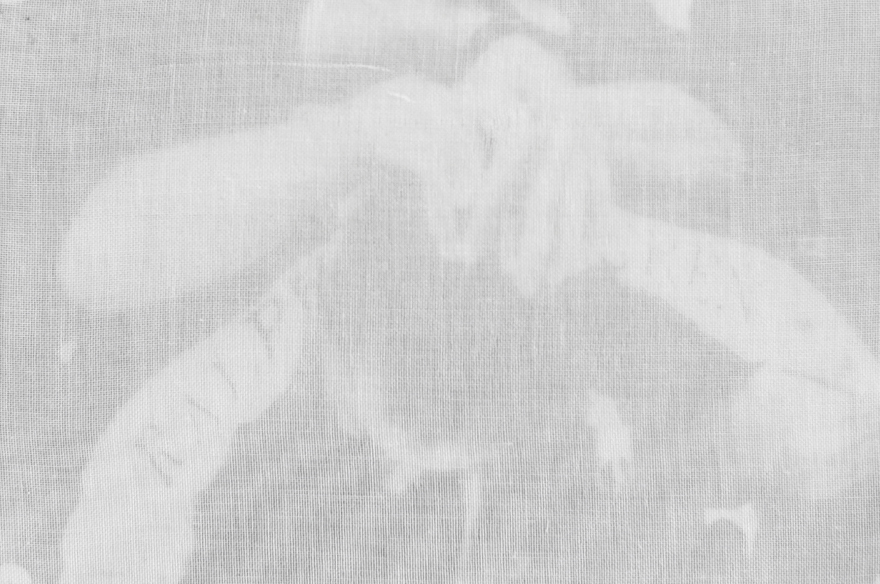
le radeau des cimes
Pooya Abbasian is drawn to images that present themselves to him. Coming from the world of cinema, he collects both documentary images and photos simply captured with his camera during his wanderings on his hard drive. The first step in accepting these recorded visuals for what they are—compositions—allows him to nullify the paradoxical relationship that exists between image and reality. Inspired by the cyanotype technique, an alternative printing process, he uses photographic negatives to project an image he defines as banal onto a surface, whether ceramic or construction plasterboard. Ultimately, it seems that the image is produced in fractions—for one image inscribed in space, a thousand others can literally be born from it—and by intrusion—through dependence and emancipation, or even the diversion of a visual economy that dominates our modes of perception and cognitive schemes.
For over thirty years, biologist Francis Hallé has been navigating true green oceans. From the canopy of primary forests, he observes, discovers, draws, and analyzes plants, trees, vegetation, and the relationships that animate them. Setting down on the roof of the forest gives him privileged and unprecedented access to its entire biodiversity, which is recognized as the richest in the world. The “Canopy Raft” is the name given to his scientific expeditions, and it is also the title of the book that retraces this incredible adventure.
Thus, the idea is to borrow a particular type of organism from the plant world, autotrophic and photosynthetic, in order to conceive the exhibition as a true bouquet of epiphytic artists. These plants, like a community in residence, evolve on a principle of cooperation. Their main characteristic is that they thrive by collaborating with the tree or structure that hosts them. Thinking of a residency at Villa Belleville as an ecosystem then reveals the subtleties, differences, and complementarities of each. The exhibition space thus reflects a fertile ground, conducive to creation in perpetual mutation.
Beyond this specific living and working environment, in the idea of shared studios where practices and personalities meet, it is necessary to signify within the exhibition space the confrontations and frictions, the exchanges and porosities that exist between the works, resulting in a shared enrichment.
Dimitri Levasseur

Discreetly living behind your face
The exhibition Discreetly living behind your face results from a project undertaken by Pooya Abbasian for more than 5 years and concluded during his residency at Galerie des petits carreaux in Brittany, France. His approach, both sensible and plastic, opens up a reflexion on social norms and the search for an identity through alterity.
Inspired by the cinema of Andrei Tarkovsky and José Luis Guerín, his work challenges photography and plays with the grid driving images’ creation and diffusion. Using a singular process – analogue pictures printed thanks to a video-projector, he intends to find his way beyond technical binaries. Both a eulogy of the contemporary pixel and a reclaiming of the old cyanotype method, he intends to preserve the digital trace on analogue prints. Maybe more of a painter than a photographer, Pooya Abbasian celebrates the poetry of the poor image, a blurriness that makes room for imagination. Original prints, pictures found on the internet and film shots make up a very personal iconography, freed from genre imperatives.
Possible narratives, fantasized stories; the exhibition keeps the mystery going. Taken on the sly, from the back, and playing with environmental constraints, the pictures are the impressions of a benevolent voyeur. The poetry is to be found in his obsession for keeping his models’ identity secret: he is not interested in the verdict given by face features but rather by the harmony of neck’s lines. Seeing without really knowing creates the sense of great tenderness that emanates from his work. Pooya Abbasian’s approach is voluntarily out of focus. It is a search for indeterminacy. What face? But also: what identity? These questions feed negatively the visitor’s own fantasy.
The face is the window on consciousness. For Emmanuel Levinas, the ethical imperative arises through it: it is the outbreak of the Other to my subjectivity, as well as the ban of violence. Judith Butler expanded the definition to the back, through which the face is abstractly represented. In this way, Discreetly living behind your face hesitates between carnal figuration and soul abstraction, it is an attempt to express the unexplainable, the enigma of alterity and the construction of our gaze. A powerful cyan blue depicts the poetry of a relation both solitary and deeply informed by the Other. A story of missed encounters.
Clémentine Proby
[1] Emmanuel Levinas, Totalité et infini, 1961.
[2] Judith Butler, Precarious life : The power of mourning and violence, 2004.